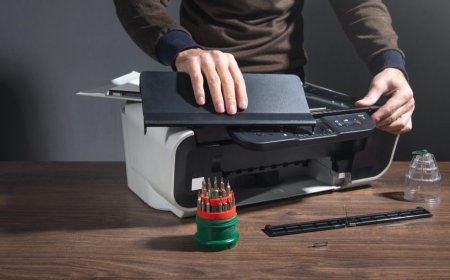Revolution in the Kitchen: The Rise of Container Microwaves in the UK
In the fast-paced world of modern Britain, convenience is no longer a luxuryit's a necessity. From self-checkout tills to on-demand food delivery, the average UK household is continually seeking new ways to save time and simplify everyday tasks. One of the latest innovations capturing the attention of busy Britons is the container microwavea compact, portable, and often rechargeable device that is changing how and where people heat their meals.
Container microwaves, also known as portable microwaves or lunchbox microwaves, are a new wave of appliances designed to fit the lifestyle of workers, students, travellers, and even campers. Unlike traditional microwaves that are bulky and require a mains connection, container microwaves offer portability, energy efficiency, and greater user flexibility. And in the UK, where space in flats and offices is often limited, their compact design is proving especially attractive.
What is a Container Microwave?
A container microwave is essentially a self-heating food container. It looks like a standard lunchbox or food storage container but contains integrated heating elements powered by either a rechargeable battery or a low-voltage mains plug. Some models use traditional microwave radiation, while others rely on advanced heat-conduction or induction technology to warm up meals. They can typically heat food in 2030 minutes, depending on the contents and power source.
Theyre often made with BPA-free plastic or stainless steel interiors, designed for safety and easy cleaning. Many units also feature leak-proof lids, making them suitable for travel or storing in a backpack or car.
The Growing UK Market
The UK has seen a surge in interest in portable and container microwaves, particularly in the wake of hybrid working models and rising food prices. With fewer people commuting daily to office buildings with full kitchen facilities, having the ability to heat food anywhere has become more important.
Amazon UK, Argos, and independent UK tech and home goods retailers have reported a growing number of searches and sales in this product category. Popular models from brands like Steambox, Hot Bento, and other Asian tech innovators are beginning to appear more frequently in UK kitchens and workspaces.
The rise in eco-conscious consumers is also playing a role. Portable microwaves promote less reliance on disposable takeaway packaging and encourage users to bring meals from home, significantly reducing food waste and single-use plastic consumption.
Use Cases for UK Consumers
1. Office Workers: Many office kitchens are overcrowded, under-equipped, or completely absent in smaller buildings. A container microwave allows employees to eat healthy, home-cooked meals at their desk without waiting in line for the office microwave.
2. Students: UK universities often restrict the use of traditional cooking appliances in dorm rooms. A battery-powered container microwave gives students the ability to heat meals in their rooms safely.
3. Commuters: For those with long train commutes or irregular hours, heating food on the go becomes feasible with a portable microwave.
4. Outdoor Enthusiasts: Campers and hikers who spend long days in the countryside or National Parks can now enjoy hot meals without needing a fire or gas stove.
5. Delivery Drivers & Truckers: With long hours and limited access to proper meal facilities, this device gives gig workers and drivers the ability to eat healthier and more economically on the job.
Key Features to Look For
When shopping for a container microwave in the UK, consider the following features:
-
Power Source: Rechargeable battery, USB-C connection, or traditional plug.
-
Heating Time: Some models heat meals faster than others.
-
Capacity: Choose a size that suits your appetite and dietary needs.
-
Material: Stainless steel interiors are often more durable and easier to clean.
-
Leak-Proof Design: Essential for portability.
-
Safety Features: Look for automatic shut-off or overheat protection.
Challenges and Limitations
Despite their advantages, container microwaves are not without limitations. Their heating process is generally slower than traditional microwaves, and their capacity may not be sufficient for larger meals. Some cheaper models also struggle with consistent heating, leaving food unevenly warmed.
Additionally, they often cost more than traditional microwavessometimes as much as 100 to 150 for a high-quality model. However, many users find the trade-off worth it for the mobility and independence they offer.
The Future of Portable Heating
As the UK continues to embrace flexible lifestyles and on-the-go convenience, container microwaves are expected to become more mainstream. With technological advancements, battery life will improve, heating times will decrease, and prices will likely become more accessible.
Innovations in smart technology may also lead to app-connected container microwaves that allow you to schedule meals to heat automatically or monitor the temperature from your phone.
Final Thoughts
The container microwave represents more than just a trendy kitchen gadgetit embodies the shift toward adaptable, user-centred technology in everyday life. In a country where time is increasingly valuable and space is at a premium, this compact, convenient solution is a smart investment for modern living in the UK.




























